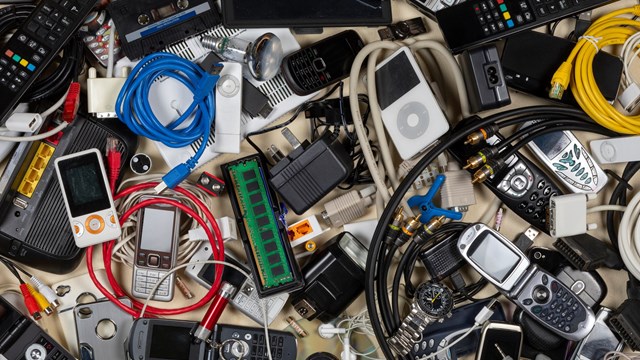
T he Cooperator’s readers follow the news. Therefore, I need not say too much about the fact that despite petroleum quotas by the Saudis and President Clinton’s attempt to build up a heating oil reserve for our region, the predictions say the cost of gas and oil will be quite high this heating season. Hence, it benefits co-op and condo boards, their managers and superintendents to operate their heating and domestic hot water systems as conservatively as possible without making building occupants uncomfortable. In 90 percent of the buildings, this is quite feasible.
The efficiency of a heating system must be approached on several levels, and the boiler may not be the most important. Below, we list the components of the heating system and the energy conservation measures that apply to each.
1. Building envelope (the roof and walls with their windows and doors and openings for air conditioners, if any). The integrity of these have more to do with your fuel bill and ability to maintain comfortable temperatures than any of your other systems! Infiltration of cold air is a major item for fuel consumption and indoor discomfort. You need to make sure that all windows are tight against infiltrating cold outdoor air. Hint: Drape a small piece of the plastic that comes with your dry cleaning over a hanger, walk around the apartments and see if the wind is blowing in. Where necessary, have caulking between the window frames and the walls and/or weatherstripping between the frames and the sashes renewed. Be particularly careful to test all outside doors, to terraces, to the lobby, to the roof and to the basement. They are most often overlooked and may need weatherstripping, too. Find out if your roof lacks adequate insulation. Investment in upgrading pays for itself rapidly.
2. The burner, where fuel is prepared for burning: Efficient combustion of gas and oil depends upon the proper proportion of fuel and air entering the boiler’s combustion chamber and thorough mixing of the two. It needs adjustment at least annually by a mechanic. If this has not been done, call for service now!
3. The boiler (making steam or hot water for heating and, probably, generating your domestic hot water): Fuel is burned in the boiler’s firing chamber, which must be in good condition. It needs to be inspected to see if there are any loose or damaged fire bricks which must be replaced.
The heat of the fire is conducted through a heat transfer surface to heat the water in the boiler. If you have a steel boiler, the heat transfer from hot gases to water occurs through the walls of steel tubes. In the case of a cast-iron boiler, across vertical sections. In either case, accumulations of soot on the fire side, or salt deposits (scale) on the water side of these surfaces impede heat transfer and cause excess fuel consumption. Hence, there needs to be periodic soot removal and boiler water treatment. If these have not been done recently, do it now! Accumulations of as little as 1/32 inch raise your fuel bill by about two percent.
Your superintendent, if he knows how and has the equipment, or a mechanic should conduct a combustion efficiency test of the boiler. If it is less than 80 percent, some measure indicated above has been overlooked. And if, for instance, the efficiency is 75 percent, then your heating bills are at least five percent greater than they should be.
4. Draft control: Spent gases exit the boiler and are sent to chimney via the flue pipe. At the exit from the boiler or in the flue pipe, there is a damper that controls the flow. Since we control boilers, basically, by turning them on and off, fuel can be saved by closing the damper and retarding the cooling of the boiler when the boiler is off, an automatic operation. This is another job for the mechanic.
5. Automatic controls: All boiler functions are regulated by automatic controls, especially by the steam pressure regulator ("Pressurtrol") or the hot water heating system aquastat. These also must be checked by a mechanic. If they are not set correctly, your building will experience erratic heating.
6. Heating distribution system: This consists of the piping of steam or hot water from the boiler through pipes to radiators or convectors in the apartments, and returns the condensed steam or cooled hot water back to the boiler. Poor heat distribution, although not usually appreciated, is the most common cause of high energy bills. This is too complicated a technology to discuss here. You may want to have a real heating expert take a survey of the distribution system; a consulting mechanical engineer or equivalent.
You want the survey to include an investigation into the common problem of an unbalanced system; i.e., a condition in which one apartment is very warm while, at the same time, others are chilly. If the heating system has to be overworked to maintain comfortable temperatures in the apartments that tend to be chilly, while the others are overheated, then consider this basic rule of thumb: For every one degree that the average temperature in the building is above, say 72 degrees, the building’s fuel consumption rises about three percent! If, then, the overheating is, say, five degrees, the heating bill is about 15 percent higher than it should be.
7. Indoor temperatures: The three percent rule, described above, requires that the board of the co-op or condo decide on what temperature should be maintained in the apartments. The city’s housing maintenance code prescribes a minimum daytime temperature of 68 degrees. Most of us find this too chilly and will be comfortable when the room temperature is about 72 degrees. The elderly, however, may want it warmer (75 degrees at least).
For these, special measures should be taken to provide higher temperatures in their apartments only. A really neat trick is to supply small fans for the affected rooms that blow onto the radiators or convectors. The increased air velocity over these radiators or convectors will cause them to create more warm air.
8. Domestic hot water (DHW): In New York multifamily buildings, hot water for sinks and tub/showers is generated in the heating boiler. The Housing Maintenance Code requires that it be at least 120 degrees at the fixtures. To assure that temperature, the water is sent from the boiler room at, perhaps, 130-140 degrees. Higher temperatures not only pose a grave risk of scalding to infants and the elderly, but is wasteful of fuel. An automatic device near the boiler controls the "send-out" temperature. That, too, should be checked by the superintendent or a mechanic.
Today, with high costs for water and high costs for fuel to heat it, it behooves the board to pay attention to the DHW system. On average, over the year, the fuel to generate DHW is likely to account for about 30% of your entire fuel expenses.
Mr. Koral is director of New York City Technical College’s Apartment House Institute and founder of The Superintendent’s Club of New York.






Comments
Leave a Comment